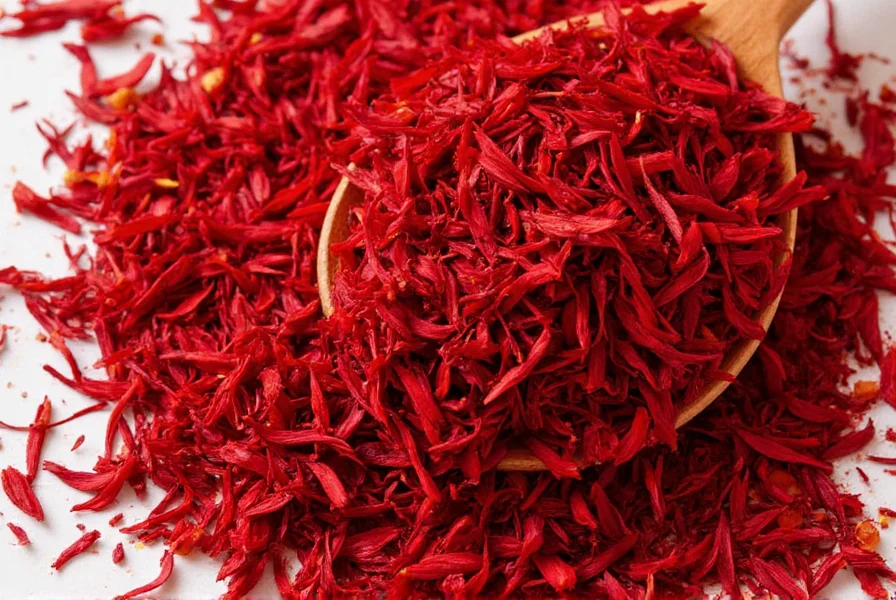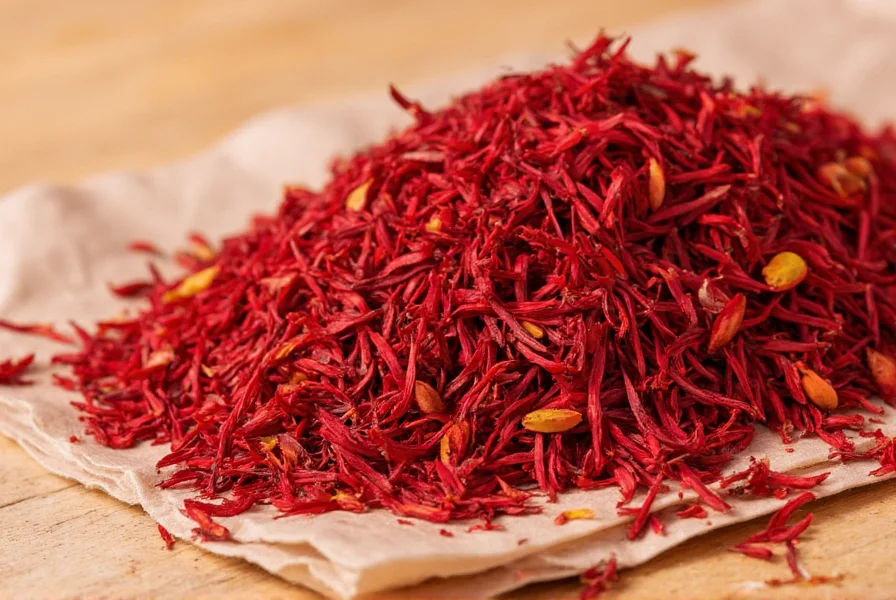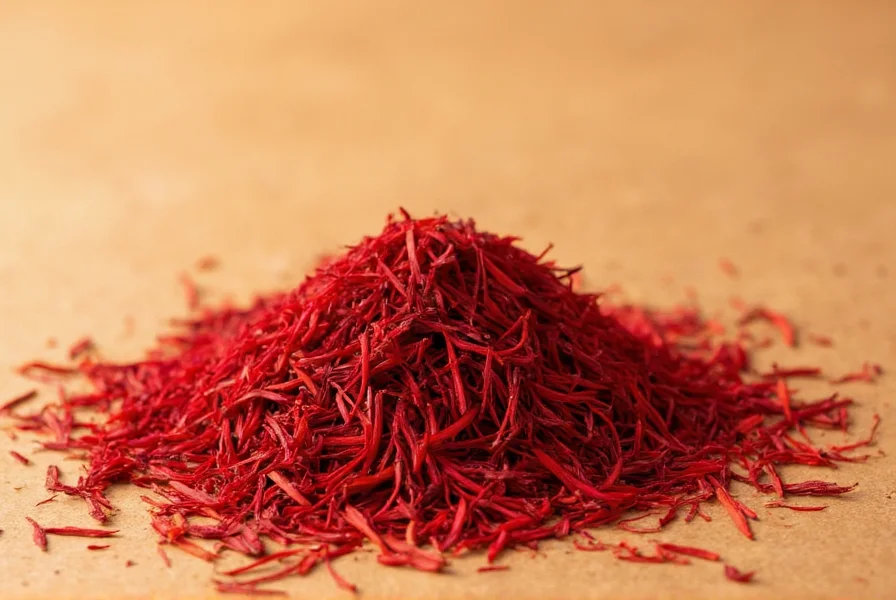Saffron, the world's most expensive spice by weight, is prized not only for its vibrant color and unique flavor but equally for its distinctive aroma. Understanding saffron smell characteristics is essential for both culinary professionals and home cooks seeking authentic spice experiences. This comprehensive guide explores the sensory science behind saffron's fragrance, how to properly evaluate it, and what the aroma reveals about quality.
The Science Behind Saffron's Signature Scent
Saffron's aroma profile is remarkably complex, containing over 150 volatile compounds that contribute to its distinctive smell. The most significant compound is safranal, which accounts for approximately 70% of saffron's fragrance. Safranal forms when picrocrocin (the compound responsible for saffron's bitter taste) breaks down during the drying process.
When evaluating saffron smell characteristics, you'll notice three primary aromatic dimensions:
- Floral notes - reminiscent of fresh hay or dried flowers
- Sweet undertones - often compared to honey or subtle fruitiness
- Earthy elements - with subtle metallic or iodine-like qualities
These elements combine to create what many describe as a "warm," "exotic" fragrance that's immediately recognizable to those familiar with authentic saffron.

How to Properly Assess Saffron's Aroma
Properly evaluating saffron smell requires technique. Simply opening a container and taking a quick sniff won't reveal the full complexity of the aroma. For accurate assessment:
- Take a small pinch of saffron threads (about 10-15 threads)
- Place them in your palm and gently rub between your hands to warm the threads
- Bring your hands close to your nose and inhale deeply
- Notice both the immediate scent and how it evolves over several seconds
Authentic saffron should release a strong, pleasant fragrance immediately upon warming. If you detect little to no scent, or if the aroma seems artificial or chemical-like, the saffron may be old, low quality, or counterfeit.
What Saffron's Smell Reveals About Quality
The intensity and complexity of saffron smell serves as a reliable quality indicator. Here's how to interpret what you're smelling:
| Aroma Characteristic | Indicates | Quality Level |
|---|---|---|
| Strong, complex floral-honey scent | Fresh, high-grade saffron | Premium (Grade I) |
| Mild but pleasant fragrance | Average quality, possibly older | Medium (Grade II) |
| Faint or inconsistent scent | Lower quality or older saffron | Standard (Grade III) |
| No scent or chemical odor | Counterfeit or severely degraded | Unusable |
Fresh saffron smell should be robust and multi-dimensional. As saffron ages, safranal gradually evaporates, causing the aroma to diminish. Properly stored saffron maintains its fragrance for 2-3 years, while poorly stored saffron may lose significant aroma within months.
Saffron Smell Compared to Common Substitutes
Understanding how saffron smell differs from common substitutes helps identify authentic product:
- Turmeric: Has an earthy, slightly bitter aroma without saffron's floral complexity. Turmeric smells more like ginger with a musty undertone.
- Annatto: Possesses a mild, slightly peppery scent with no floral notes. Annatto's aroma is significantly weaker than saffron's.
- Marigold petals: Emit a grassy, somewhat medicinal smell that lacks saffron's sweetness and complexity.
- Artificial saffron: Often has a chemical or perfume-like odor that's noticeably different from natural saffron's nuanced fragrance.
When learning how to identify real saffron by smell, remember that authentic saffron has a distinctive scent that's difficult to replicate artificially. Counterfeit products often miss the subtle balance of floral, sweet, and earthy notes that characterize genuine saffron.

Preserving Saffron's Fragrance
To maintain saffron's delicate aroma, proper storage is essential. Exposure to light, heat, and moisture rapidly degrades safranal, the compound responsible for saffron smell. Follow these guidelines:
- Store in an airtight container away from light
- Keep in a cool, dry place (refrigeration extends shelf life)
- Avoid frequent opening of the container
- Consider vacuum-sealed packaging for long-term storage
When stored properly, high-quality saffron maintains its distinctive aroma for 2-3 years. However, for optimal fragrance, use within 12-18 months of purchase. The gradual loss of saffron smell directly correlates with diminishing flavor and coloring power.
Common Misconceptions About Saffron's Scent
Several myths persist about saffron aroma that deserve clarification:
- "Stronger smell means better quality" - While premium saffron has a robust aroma, excessively strong or chemical-like scents often indicate artificial enhancement.
- "All saffron smells the same" - Regional variations affect saffron's scent profile, with Iranian saffron often having more earthy notes while Spanish varieties tend toward floral sweetness.
- "Saffron should smell like iodine" - While some detect subtle iodine notes, a strong medicinal smell suggests poor quality or contamination.
- "No smell means it's fake" - While counterfeit saffron often lacks aroma, genuinely old saffron also loses its fragrance over time.
Understanding these nuances helps develop a more sophisticated appreciation for saffron smell characteristics and prevents misjudgment of quality.
Conclusion
Saffron's distinctive aroma represents one of its most valuable sensory attributes. The complex interplay of floral, honey-like, and earthy notes creates a fragrance profile that's immediately recognizable to those familiar with authentic saffron. By learning how to properly assess saffron smell, consumers can better evaluate quality, detect potential counterfeits, and appreciate the subtle variations between different saffron grades and origins. Whether you're a professional chef or home cook, developing your ability to identify and appreciate saffron's unique scent will enhance your culinary experiences and ensure you're getting the genuine article.
Frequently Asked Questions
What does real saffron smell like compared to fake saffron?
Authentic saffron emits a complex, floral-honey aroma with subtle earthy undertones. Fake saffron typically has little to no scent, or may smell chemical-like, musty, or overly medicinal. Genuine saffron's fragrance should be immediately noticeable and pleasant when threads are warmed between your palms.
Why does my saffron have no smell?
Saffron with no discernible aroma is likely either severely degraded due to improper storage or potentially counterfeit. Fresh, high-quality saffron should have a strong, distinctive fragrance. Exposure to light, heat, or moisture causes safranal (the primary aromatic compound) to evaporate over time. If your saffron has no smell despite proper storage, it may be adulterated with other substances.
How can I test saffron quality using smell?
To test saffron quality by smell, take 10-15 threads and warm them between your palms for 10-15 seconds. High-quality saffron will release a strong, complex fragrance with floral, honey-like notes and subtle earthiness. Premium saffron maintains this robust aroma for several minutes after warming. If the scent is weak, fades quickly, or smells artificial, the saffron is likely lower quality or inauthentic.
Does the smell of saffron change when cooked?
Yes, saffron's aroma transforms when heated. The dry, floral notes become more pronounced and integrate with other ingredients. When steeped in warm liquid, saffron releases additional aromatic compounds, creating a more rounded fragrance profile. The characteristic saffron smell becomes more integrated with the dish rather than standing out as a distinct element, which is why proper blooming is essential for optimal flavor and aroma development.
How long does saffron maintain its distinctive smell?
Properly stored saffron maintains its distinctive aroma for 2-3 years. When kept in an airtight container away from light and moisture, the fragrance remains robust for the first 12-18 months. After this period, the aroma gradually diminishes as safranal evaporates. Refrigeration can extend saffron's aromatic shelf life, while exposure to heat, humidity, or frequent container opening accelerates aroma loss.











 浙公网安备
33010002000092号
浙公网安备
33010002000092号 浙B2-20120091-4
浙B2-20120091-4